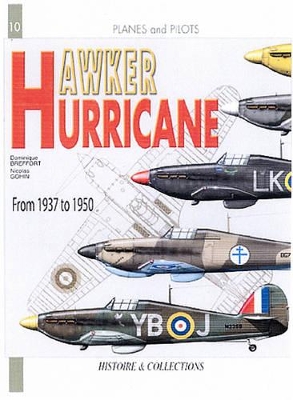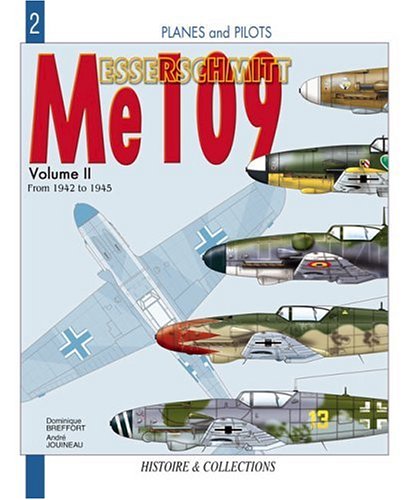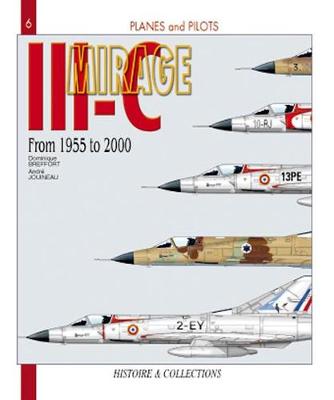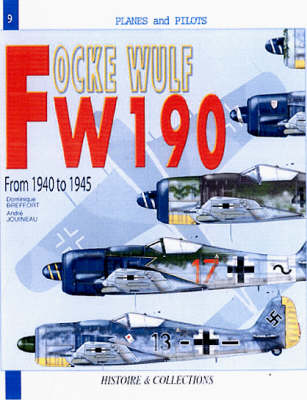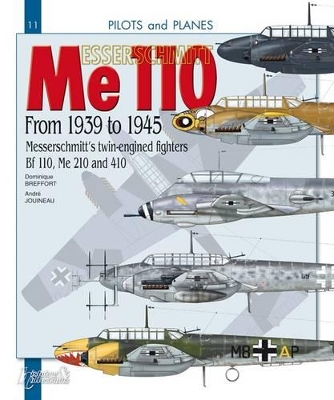Planes & Pilots
5 total works
Although the first British combat plane to fly faster than 300mph, produced almost to the end of World War II and used on every front, the Hawker Hurricane hasn’t always been recognised for what it was worth; although its career was brilliant it was eclipsed by the Supermarine Spitfire.
However, the Hurricane was the real winner of the Battle of Britain, since in the Summer of 1940, two thirds of RAF Fighter Command’s squadrons were equipped with Hurricanes. Even better, at the end of the war, the Hurricane had chalked up a very impressive tally, since more than half of all British kills, all theatres of operations included, were scored by the different versions of the Hurricanes.
This highly detailed book contains the kind of detail every modeller will value, with colour profiles of the variants showing their markings and including a history of the plane illustrated with black and white photos.
However, the Hurricane was the real winner of the Battle of Britain, since in the Summer of 1940, two thirds of RAF Fighter Command’s squadrons were equipped with Hurricanes. Even better, at the end of the war, the Hurricane had chalked up a very impressive tally, since more than half of all British kills, all theatres of operations included, were scored by the different versions of the Hurricanes.
This highly detailed book contains the kind of detail every modeller will value, with colour profiles of the variants showing their markings and including a history of the plane illustrated with black and white photos.
This is the second volume in a new series of books from Histoire & Collections: Planes & Pilots. The books will be devoted in detail to the most prestigious warbirds from the Second World War, featuring over 200 colour illustrations, including aircraft profiles, camouflage and markings, maps and diagrams, plus a lot of previously unpublished archive photographs. This new volume introduces the later models of the most famous German fighter, from the F type to the strangest of variants from the last years of the Third Reich. Full colour computer graphics specially created by Andre Jouineau, (the illustrator for H & C's American Civil War books) who is an aeronautics expert and works for Air France. Full of specially created full colour artwork and unpublished black and white archive photographs. Latest title from the Histoire & Collections stable - this publisher's books are all eagerly awaited by military enthusiasts, and sales are always good
The first French operational Mach-2 fighter has served in an impressive number of air forces from the Sixties to the present day, in numerous versions of Mirage III and 5 delta combat aircraft.
Every variant and every livery - 20 different cockades or so - are included in this new book on the ubiquitous French fighter which gained worldwide fame.
Every variant and every livery - 20 different cockades or so - are included in this new book on the ubiquitous French fighter which gained worldwide fame.
The "other" IIIrd Reich fighter is a symbol of technology as well as sturdiness. A mythical plane, the FW 190 first appeared in 1941 and, from thenon, was to be a real problem to Allied air forces. From the Eastern front to the Defense of the Reich, including the Normandy campaign, the fighter that the last German aces flew with distinction, is illustrated in all its variety of camouflage and schemes and markings.
• A wonderful reference for modellers and aviation enthusiasts on the Messerschmitt Bf110 and its replacements, the Me 210 & 410
The Messerschmitt Bf 110 was designed in the middle of the thirties, a twin-engine heavy fighter. Hermann Goring was a proponent of the BF 110, and nicknamed it his Eisenseiten (Ironsides). Development work on an improved type to replace the Bf 110, the Messerschmitt Me 210 began before the war started, but its teething troubles resulted in the Bf 110 soldiering on until the end of the war in various roles, alongside its replacements, the Me 210 and the Me 410.
The Bf 110 served with success in the early campaigns, the Polish, Norwegian and Battle of France. The Bf 110's lack of agility in the air was its primary weakness. This flaw was exposed during the Battle of Britain, when some Bf 110-equipped units were withdrawn from the battle after very heavy losses and redeployed as night fighters, a role to which the aircraft was well suited.
After the failure of the Bf 110, its designated successor, the Me 210, started a second career which was indeed infinitely more glorious since it scored more kills not only than any other Luftwaffe night-fighter but also more than all the aircraft of this type in all the air forces fighting in World War II.
The Messerschmitt Bf 110 was designed in the middle of the thirties, a twin-engine heavy fighter. Hermann Goring was a proponent of the BF 110, and nicknamed it his Eisenseiten (Ironsides). Development work on an improved type to replace the Bf 110, the Messerschmitt Me 210 began before the war started, but its teething troubles resulted in the Bf 110 soldiering on until the end of the war in various roles, alongside its replacements, the Me 210 and the Me 410.
The Bf 110 served with success in the early campaigns, the Polish, Norwegian and Battle of France. The Bf 110's lack of agility in the air was its primary weakness. This flaw was exposed during the Battle of Britain, when some Bf 110-equipped units were withdrawn from the battle after very heavy losses and redeployed as night fighters, a role to which the aircraft was well suited.
After the failure of the Bf 110, its designated successor, the Me 210, started a second career which was indeed infinitely more glorious since it scored more kills not only than any other Luftwaffe night-fighter but also more than all the aircraft of this type in all the air forces fighting in World War II.
